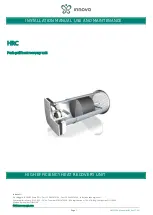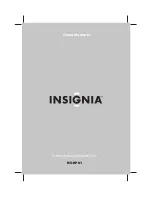
RECOMMENDATIONS FOR THE PREVENTION OF CORROSION AND
SCALING IN HEATING SYSTEMS
How oxygen and carbonates can affect the heating system
Oxygen and dissolved gasses in the water of the primary circuit contribute to the oxi-
dation and the corrosion of the system components that are made of ordinary steel
(radiators, ...). The resulting sludge is then deposited in the appliance exchanger.
The combination of carbonates and carbon dioxide in the water results in the formation of scale
on the hot surfaces of the installation, including those of the appliance exchanger.
These deposits in the heat exchanger reduce the water fl ow rate and thermally insulate the ex-
change surfaces, which is likely to damage them.
Sources of oxygen and carbonates in the heating circuit
The primary circuit is a closed circuit; the water it contains is therefore isolated from the mains
water. When maintaining the system or fi lling up the circuit, water renewal results in the addition
of oxygen and carbonates in the primary circuit. The larger the water volume in the system, the
larger the addition.
Hydraulic components without an oxygen barrier (PE pipes and connections) admit oxygen into
the system.
Prevention Principles
1. Clean the existing system before installing a new appliance
-
Before the system is fi lled, it must be cleaned in accordance with standard EN14336.
Chemical cleaning agents can be used.
- If the circuit is in bad condition, or the cleaning operation was not efficient, or the volume of
water in the installation is substantial (e.g. cascade system), it is recommended to separate
the appliance from the heating circuit using a plate-to-plate exchanger or equivalent. In
that case, it is recommended to install a hydrocyclone or magnetic filter on the installation
side.
2. Limit the fill frequency
-
Limit fill operations. In order to check the quantity of water that has been added into the
system, a water meter can be installed on the filling line of the primary circuit.
- Automatic filling systems are not recommended unless the fill frequency is monitored and
the scale and corrosion inhibitor remain at the correct levels.
- If your installation requires frequent water refilling, make sure your system is free of water
leaks.
- Inhibitors may be used in accordance with standard EN 14868.
3. Limit the presence of oxygen and sludge in the water
-
A deaerator (on the appliance flow line) combined with a dirt separator (upstream of the
appliance) must be installed according to the manufacturer's instructions.
- ACV recommends using additives that keep the oxygen in solution in the water, such as
Fernox (www.fernox.com) and Sentinel (www.sentinel-solutions.net) products.
- The additives must be used in accordance with the instructions issued by the manufacturer
of the water treatment product.
4. Limit the carbonate concentration in the water
- The fill water must be softened if its hardness is higher than 20° fH (11,2° dH).
- Check regularly the water hardness and enter the values in the service log.
- Water hardness table :
Water hardness
°fH
°dH
mmolCa(HCO3)2 / l
Very soft
0 - 7
0 - 3.9
0 - 0.7
Soft
7 - 15
3.9 - 8.4
0.7 - 1.5
Fairly hard
15 - 25
8.4 - 14
1.5 - 2.5
Hard
25 - 42
14 - 23.5
2.5 - 4.2
Very hard
> 42
> 23.5
> 4.2
5. Control the water parameters
- In addition to the oxygen and the water hardness, other parameters of the water must be
checked.
- Treat the water if the measured values are outside the range.
Acidity
6,6 < pH < 8,5
Conductivity
< 400 μS/cm (at 25°C)
Chlorides
< 125 mg/l
Iron
< 0,5 mg/l
Copper
< 0,1 mg/l
EN
FR
NL
ES
IT
DE
PL
RU
en
33
WaterMaster 25 - 35 - 45 - 70 - 85 - 120 : A1006482 - 664Y7300 • D
TECHNICAL CHARACTERISTICS
















































